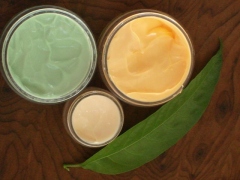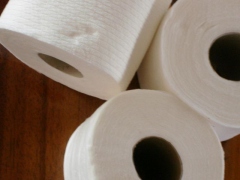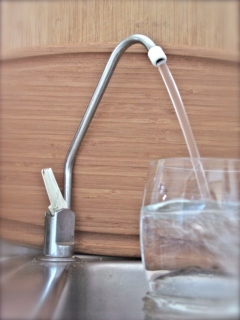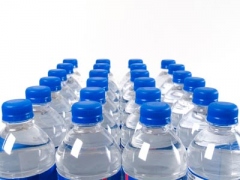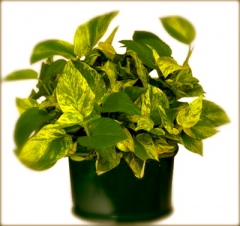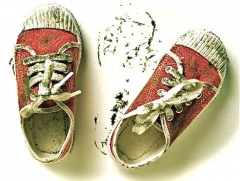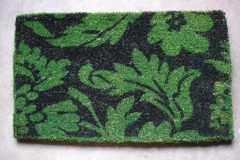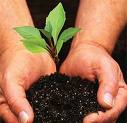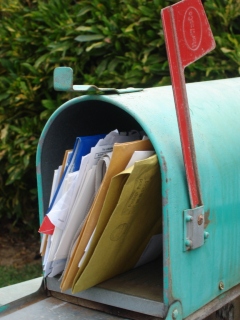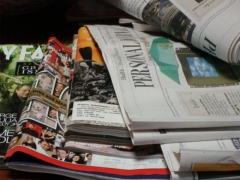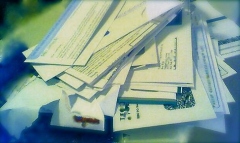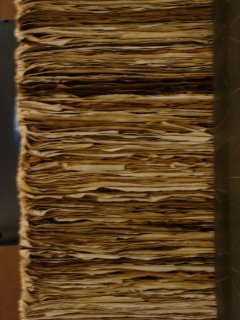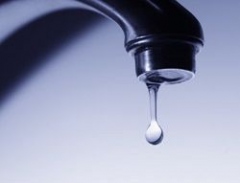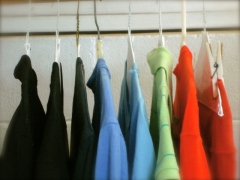15 Ways to Go Green + Stay Sane
1. CLEAN KINDLY.
Use: Plant-based, Biodegradable Soap and Detergent
Loose: Chlorine Cleaners
If ingredients are not fully disclosed (or you can't pronounce them), choose a product you can trust!
Clean green product recommendations
2. CHOOSE NATURAL PERSONAL CARE PRODUCTS + COSMETICS.
Go clean + green when it comes to beauty and grooming. It will do your body and the planet a gorgeous world of good.
Choose pure products with pronounceable plant-based ingredients.
Opt for natural beauty and grooming that harness plants instead of petroleum and natural fragrances and colorants instead of chemical constituents
Let your Natural Beauty bloom
3. GO FOR P-C RECYCLED TOILET PAPER, PAPER TOWELS + TISSUE.
Majestic trees are too precious to put in the toilet or the rubbish. Go for post-consumer recycled paper goods, the higher the p-c content, the better. I am not suggesting sandpaper-grade toilet paper or tissue on your bum or tender nose - there are fluffy white recycled-content varietals made snowy white via oxygen bleach instead of dastardly chlorine. Ditto for paper towels.
Product recommendations
4. INSTALL A WATER FILTER.
Clean, safe water without all the waste. Brilliant. Less plastic water bottles, less energy and fuel for water delivery. Fresh clean water is a necessity, not a luxury.
HOW MANY, HOW MUCH
40 million : number of plastic water bottles disposed of EVERY DAY in the US
6% : average amount of plastic recycled in the US
$15 billion : spent on bottled water annually in the U.S.
Health + Saftey about tap water : the main reason a majority of bottled-water-drinkers do so (1)
60% : proportion of municipal facilities across the country violate their Clean Water Act permits (2)
2,100 : number of known contaminants and toxic chemicals the EPA estimates to be in US drinking water (3), several of which are known poisons and carcinogens (4)
Water filter anyone?
5. BRING IN HOUSEPLANTS!
Houseplants literally grow fresh air - producing clean, fresh oxygen and pulling out chemicals like formaldehyde and benzene at the same time.
HOW MANY, HOW MUCH
2 to 10 times : how much more polluted indoor air is than outdoor air according to EPA estimations (5). The culprits? - Synthetic materials, chemical cleaning products, plastics, furnishings like carpets, couches, and mattresses, and chlorinated water to name a few.
1 to 2 : number of plants per 100 square feet to provide fresh air and healthy mold-free humidity in any room so everyone can breathe deeply with ease.
6. KICK OFF YOUR SHOES.
Removing shoes at the door is not just a pleasant custom, but also prevents tracking in a host of unwanted grub like pesticides and herbicides into your home. Other shoe hitchhikers include weed-killers, lawn chemicals, lead, toxic cleaners and wood preservatives.
It's as common sense as washing your hands before eating or covering you mouth when sneezing and especially true for homes clad with carpet, where all that nasty stuff rubs off and accumulates.
Get a Welcome Mat - A doormat outside and a entry-way rug inside are also limit pesticide track-in and prevent them from migrating through the house. Simple, smart, and they look nice too.
HOW MANY, HOW MUCH
# 2 : cause of exposure to dangerous pesticides in homes that the "track in" route on shoes is suspected of. Number 1 cause? conventionally grown fruits, vegetables and animal products (6).
7. PLANT ONE TREE EVERY YEAR.
Trees are the lungs of the planet. They heroically sequester (remove) CO2 from the atmosphere; store it as cellulose in their trunks, limbs, branches and roots, and generously release oxygen in its place. That is a sophisticated service - making our very lives possible and with potential to offset and reverse current greenhouse gas pollution. About half of the greenhouse gas effect, which is causing global warming is from CO2 emissions.
HOW MANY, HOW MUCH
30 million : number of more trees that would absorb CO2 in the atmosphere and produce fresh oxygen if only 10 percent of the U.S. population planted just one.
50 lbs : amount of CO2 a year a single mature tree can absorb - which is enough oxygen to sustain 2 adults (7).
120 to 240 lbs : amount of toxic pollutants a mature tree absorbs per year (3), including gaseous pollutants like sulfur dioxide from coal-burning power plants, nitrous oxides from vehicle exhaust
1 billion lbs : amount of CO2 that would be reduced annually if every American family planted just one tree a year - which is about 5% of the worldwide output (8).
100,000 gallons : amount of rainfall just 100 mature trees can catch and intercept from running off (9)
47?F : number of degrees cooler the interior of a car is that is parked in the shade vs. sun (10)
5% to 9% : average increase in property value of equivalent homes that are well landscaped with mature trees (11, 12)
8. OPT OUT OF JUNK MAIL
Do you know anyone who likes junk mail? Me neither. It's the source of a mountian of unwanted rubbish.
There are ways to get off unsolicited and junk mail lists and reduce the hemorrhage of waste. It takes a little time and effort- so be persistent! Our planet is worth it.
GET HELP:
Green Dimes - they'll do it for you.
This non-profit organization that will reduce the marketing to your home, help maintain your privacy and plant a bunch of trees on your behalf. For a dime-a-day ($36/year), they will stop what you want them to stop - meaning you can get the catalogues you like and forget the rest - including contacting the DMA (Direct Marketing Association) to nip national and direct marketers in the bud. They will plant a tree every year you stay on with them and are on call 7 days a week for questions and help. Greendimes.com
DO IT YOURSELF:
-
Stop credit card offers | contact OptOutPreScreen.com,where the Consumer Credit Report Industry lets you "opt-out" of receiving preapproved andprescreened credit card offers. You can also phone your request to 888-5-OPTOUT (567-8688).
-
To get off mailing and telemarketing lists | contact the Direct Marketing Association to register online + sign up for the federal Do Not Call Registry, which registers your phone number for free and will ban you number for 5 years (after which you will need to re-register).
-
Stop your Name Sold | You can specifically request you're your name not be lent, sold or traded when you order something on-line or over the phone. Do it when renewing subscriptions and returning a warrantee card. When you make purchases on-line, make a note in the comment box that you don't want your name shared for any purposes without authorization. A little persistent effort pays, and the forests and icecaps thank you.
HOW MANY, HOW MUCH
62 billion : number of pieces of junk mail delivered in the US every year (13) - which comes to 41 lbs per citizen (14).
5.8 million tons : amount of paper used to prodoce catalogues and unsolicited wads of pre-approved credit cards and that arrive to our homes annually (15)
44% : average amount of junk mail that gets thrown away unopened (16)
100 million : estimated number of trees it takes to produce those catalogs and unsolicited mail
28 billion gallons : amount of water to do so too (17)
9. DON'T BE A DRIP
Save money and water resources: fix leaky faucets and toilets. Period.
HOW MANY, HOW MUCH
3,000 gallons : amount of water a leaky faucet or shower that drips at the rate of one drip per second can waste a year (18).
2,000 gallons : amount of water a leaky toilet can waste a day (19)
Next Green Step : Sink aerators, low-flow shower heads and toilets
10. BE WISE WITH LAUNDRY
Wash full loads to get the most out of water and energy use.
Rinse Laundry on Cold Water Cycle - 85 to 90 percent of energy used to wash clothes is to heat water (20).
Use Plant-based, biodegradable detergent without chemical fragrances or dyes.
Opt out of chlorine bleach. Choose oxygen bleach instead - color-safe, fabric-friendly, and eco-brilliant.
Hang Dry what you can - save energy, money and extend the life of your clothes.
Next Green Step: When you're up to bat for a new washer or dryer, look for high-efficiency models to save a bundle of energy, water and money in the long-run.
11. GO ORGANIC
Buying and eating organically grown food is one of the singly most eco-powerful green choices for personal and planetary health. Certified organic growing methods do not employ petro-chemical fertilizers and persticides that are harmful to humans and destructive in the environment. Organic farming methods fortify soil naturally and consistently show to be more energy efficient, produce less waste, and sustain a more diverse ecosystem (populations of plants, animals, and insects) than conventional farms.
12. BUY LOCAL
Buying locally grown food means less fossil fuels went into trucking it to you. That's a good thing because these days it's not just common to ship food around the country, it's shipped around the globe. The average morsel of food travels about 1,300 to 1,500 miles from farm to plate in the U.S. (21) (22) (23). That's some well-traveled food. Some estimate that it takes almost as much energy to ship food as it does to grow it (24) (25). That's a lot of energy. The jury is out on the exact figure, but it takes more energy (calories) to produce and ship food today than we actually get from it (26) (27) (28). A rough estimate illustrates that 120 million tons of CO2 are directly attributable to domestic food transport each yeat, and U.S. imports and exports likely account for an additional 120 million tons (29). Buying locally grown food is a simple way to change that equation for the better and get the most for your money.
The bottom line is local food is fresher, tastes better and saves and undue amount of energy. Everybody wins.
13. EAT MORE VEGGIES
Beyond being a solid source for a full spectrum of good stuff - vitamins, nutrients, minerals, antioxidants, and phytonutrients - a plant-based diet requires a lot less energy and water to keep you well fed. Meat is the least energy-efficient food on the planet, requires a serious amount of water and is a major polluter.
Cows are thirsty: to producing just one pound of beef requires 2,500 gallons of water - that's 40 times more water than it takes to produce a pound of potatoes (30).
Get this, eating just 2 to 4 pounds less meat a year will save as much water as not showering every day for a year*.
*Water figures based on average of two calculations: a 5 minute shower a water-conserving showerhead (2.5 gallons/minute) x 365 days = 4,562.5 gallons water/year (2 pounds meat = 5,000 gallons water)
10 minute showers under and an ordinary showerhead (5 gallons/minute) x 365 days = 9,125 gallons water/year (4 pounds meat = 10,000 gallons water)
Leaning towards a plant-based diet, or even going veggie just one day a week is a powerfully green choice. Your body, fresh water supplies and ice caps everywhere will rejoice.
HOW MANY HOW MUCH
35 to 1 : amount of calories of energy a cow needs to eat to produce just one calorie of beef (31). That's like investing $350 and a getting $10 return. Beef is not a low-calorie food. You get the picture.
130 times : amount of more waste generated by livestock compared to humans (32)
11 billion lbs : amount of manure, sludge and slurry waste are produced by livestock every year (33), including VOCs (volatile organic chemicals) (34), hydrogen sulfide (35), ammonia (36), endotoxins (37)
20% : amount of methane gas produced by livestock - the #2 greenhouse gas contributing to global warming (38)
20 times more : the heat-trapping capacity of methane compared to CO2 (39)
14. GET A TRAVEL MUG + REUSABLE BAG
So simple, so smart.
HOW MANY HOW MUCH
14.4 billion : number of paper coffee cups disposed of in the US every year (40)
100 billion : number of plastic bags used in the US per year
12 million barrels : amount of oil used to make that many plastic bags - http://www.worldwatch.org/
6% : average amount of plastic recycled in the US
1,000 years : the length of time it takes a plastic bag to break down (41)
No : answer to the question "does plastic ever truly break down". Yes : it photodegrades into smaller toxic bits, contaminating the soil and water and entering the food chain (42)
187.5 million lbs : amount of waste that could be saved if every American used just ONE LESS grocery bag. Double that (375 million lbs) if everyone used 2 less...
GOOD TO KNOW
Most paper coffee cups are not only bleached with dastardly chlorine, they are also lined with a thin film of plastic to prevent leakage - a significant impact on the waste stream and a waste of enough petroleum to heat 8,300 homes (43).
15. RECYCLE YOUR CELL PHONE
So simple, so smart.
HOW MANY, HOW MUCH
250 million : number of Americans that have a cell phone
18 months : the length of time the average cell phone is used before upgrading to a new phone (Washington Post).
What happens to a smartphone or prepaid phone that is recycled?
Reused: If in worthy condition, devices are given a second life by worthy charities
Refurbished: Some devises are able to be refurbished and returned to service
Recycled/Recovered: Components like plastic and precious metals in cell phones are valuable and can be recovered and recycled into new products from kitchen counters and cabinets to circuitry boards.
3 THINGS TO DO BEFORE RECYCLING YOUR CELL PHONE:
1. Terminate your service
2. Clear the phone's memory - contacts, address book and other stored info
3. Remove the SIM card, if it has one. If you aren't sure, or don't know how to remove it, contact your service provider.
There are many recycling programs to feed old cell phones to.
Organizations that recycle cell phones:
Wireless...The New Recyclable(tm) - a national, voluntary program implemented by the wireless industry to facilitate environmentally sound production and take-back of wireless devices. This central website links to all participating members and options | www.recyclewirelessphones.com
Eco-Cell | cell phone recycling for environmentally minded fundraisers | www.eco-cell.org
GRC Wireless Recycling | profitable, socially responsible cell phone recycling opportunities | www.grcrecycling.com
Recycle for Breast Cancer Program | protect the environment and support a worthy cause | www.recycleforbreastcancer.org
Verizon Wireless | donate your cell phone recycle your phone to HopeLine via Verizon to help victims and survivors of domestic abuse, or recycle it and receive a gift card | VerizonWireless.com
(1) NRDC (national Resources Defense Council, Executive Summary "Bottled Water, Pure Drink or Pure Hype?" http://www.nrdc.org/water/drinking/bw/exesum.asp (sited 3/29/07)
(2) U.S. PRIG, "Polluters Continue to Violate Clean Water Act: 60 Percent Exceeded Pollution Permits in Recent 18-Month Period" 3/30/04 . http://www.uspirg.org/news-releases/our-rivers-lakes-and-streams/our-rivers-lakes-and-streams/polluters-continue-to-violate-clean-water-act-60-percent-exceeded-pollution-permits-in-recent-18-month-period (sited 3/29/07)
(3) Center for Study of Responsive Law, East West, "Troubled Water on Tap," July 1989.
(4) Ibid.
(5) EPA (Environmental Protection Agency), "The Inside Story: A Guide to Indoor Air Quality", U.S. EPA and the U.S. Consumer Product Safety Commission - http://www.epa.gov/iaq/pubs/insidest.html (site 5/5/07)
(6) PG News, Post-Gazette Washington Bureau, "Shoes often a vehicle for tracking pesticides into house", 6/22/99, Michael Woods. http://www.post-gazette.com/healthscience/19990622htrackin2.asp
(7) "Arguments for Land Conservation: Documentation and Information Sources for Land Resource Protection", McAliney, M., Trust for Public Land, Sacramento, CA 1993.
(8) American Forestry Association, "Tree Facts: Growing Greener Cities", 1992 - - sited from Colorado Trees Organization . http://www.coloradotrees.org/benefits.htm (sited 4/22/07)
(9) USDA Forest Service, "Benefits of Urban Trees: Urban and Community Forestry - Improving Our Quality of Life", 2003, Forestry Report R8-FR 71, Southern Region, Atlanta, GA.
(10) Journal of Arboriculture, "Effects of Tree Cover on Parking Lot Microclimate and Vehicle Emissions", Scott, K. ; Simpson, J., ;McPherson, G., 1999, 25(3).
(11) Council of Tree and Landscape Appraisers, "Valuation of Landscape Trees, Shrubs, and Other Plants," 7th edition, Neely, D., 1988, International Society of Arboriculture.
(12) Brown University, "Economic Benefits of Urban/Suburban Forestry", Center for Environmental Studies, 2/04. http://envstudies.brown.edu/classes/es201/2003/Forestry/econbene.htm (sited 4/23/07)
(13) CDR (Center for the Development of Recycling), "Know the Facts," Deparment of Energy Studies, San Jose State University. http://recyclestuff.org/JunkMail.asp (sited 6/1/07)
(14) Ibid.
(15) EPA (U.S. Environmental Protection Agency), "Municipal Solid Waster in the United States, 20056 Facts and Figures." http://www.epa.gov/msw/pubs/mswchar05.pdf (sited 6/1/07)
(6) CDR (Center for the Development of Recycling), "Know the Facts," Deparment of Energy Studies, San Jose State University. http://recyclestuff.org/JunkMail.asp (sited 6/1/07)
(17) New American Dream, "Just the Facts: Junk Mail Facts and Figures," (Based on calculations from Conservatree and U.S. Forest Service statistics). http://www.newdream.org/junkmail/facts.php
(20) "How to Save Energy and Money in your Home", Tufts University, 2005. www.tufts.edu/tie/tci/excel%20and%20word/SaveEnergy.doc [sited Jan 2007]
(18) EPA (U.S. Environmental Protection Agency), "WaterSense: Efficiency Made Easy," (updated 5/25/07). http://www.epa.gov/watersense/pubs/simple.htm (sited (6/16/07)
(19) Ibid.
(21) USDA (U.S. Department of Agriculture) Agricultural Economic Journal, "Transportation and Fuel Requirements in the Food & Fiber System," Report No. 444.
(22) World Watch Institute, "Home Grown, the Case for Local Food in a Global Market," Halweil, B., 2002, Paper No. 63, pp. 16-21.
(23) Center for Sustainable Systems, University of Michigan, "Life Cycle-Based Sustainability Indicators for Assessment of the U.S. Food System," Heller, M., Keoleian, G., 2000, Report No. CSS00-04.
(24) Ibid.
(25) Pimentel, D. (Cornell University), Giampietro, M. (Isiituto Nazionale dell Rome), " Food, Land, Population and the U.S. Economy," 1994, Carrying Capacity Network Washington D.C. http://dieoff.org/page55.htm (sited 6/15/07)
(26) Ibid.
(27) Center for Sustainable Systems, University of Michigan, "Life Cycle-Based Sustainability Indicators for Assessment of the U.S. Food System," Heller, M., Keoleian, G., 2000, Report No. CSS00-04.
(28) World Watch Institute, "Home Grown, the Case for Local Food in a Global Market," Halweil, B., 2002, Paper No. 63, pp. 16-21
(29) Food Water & Watch, “Fuel and Emissions from Industrial Agriculture.” www.foodandwaterwatch.org/food/factoryfarms/dairy-and-meat-factories/climate-change/greenhouse-gas-industrial-agriculture
(30) NRDC (National Resources Defense Council), "Forces for Nature, 50 Ways you can Help", 2007.
(31) Environmental Health Perspectives, " How Sustainable Agriculture Can Address the Environment and Human Health Harms of Industrial Agriculture," Horrigan, L., Lawrence, R. S., Walker, P., 2002, Vol. 110 (5). http://www.ehponline.org/members/2002/110p445-456horrigan/EHP110p445PDF.PDF (sited 6/15/07)
(32) Minority Staff of the U.S. Senate Committee on Agriculture, Nutrition and Forestry, "Animal Waste Pollution in America: An Emerging National Problem," Washington, D.C., 1997, pp.3.
(33) NRDC (National Resources Defense Council), "Cesspools of Shame, How Factory Farm Lagoons and Sprayfields Threaten Environmental and Public Health," Marks, R., 2001. http://www.nrdc.org/water/pollution/cesspools/cesspools.pdf (sited 6/15/07)
(34) Institute for Agriculture and Trade Policy, "The Proce We Pay for Corporate Hogs," Halverson, M., 2000, pp. 61.
(35) Environmental Health Perspectives, "Intensive Livestock Operations, Health, and Quality of Life Among Eastern North Carolina Residents," Wing, S., Wolf, S., 200, Vol. 108(3), pp. 233.
(36) Albany State University, "Pigs, Profits and Rural Communities," Jackson, L., (ed: Thu, K. M., Durrenberger, E. P., 1998, pp. 107.
(37) Environmental Quality Board, "Summary: The Effects of Animal Agriculture on Water Resources," Minnesota College of Agricultural, Food and Environmental Sciences, 1999, pp. G-195.
(38) EPA (U.S. Environmental Protection Agency), "Methane," (updated 4/27/07). http://www.epa.gov/methane/ (sited 6/16/07)
(39) NRDC (National Resources Defense Council), "Forces for Nature, 50 Ways you can Help", 2007
(40) Ceres, Press Release, "Ceres Praises National launch of 'Eco-friendly Paper Coffee Cup", July 26, 2006 - http://www.ceres.org/news/news_item.php?nid=215
(41) Herrick, T. "Plastic Bag Fight Pits U.S. Marketers v. U.S. Importers." Wall Street Journal October 10, 2003.
(42) Institute for Lifecycle Environmental Assessment. "Paper vs. Plastic Bags." 1990.
(43) Ceres, Press Release, "Ceres Praises National launch of 'Eco-friendly Paper Coffee Cup", July 26, 2006. http://www.ceres.org/news/news_item.php?nid=215
Tagged: smart (green) living


